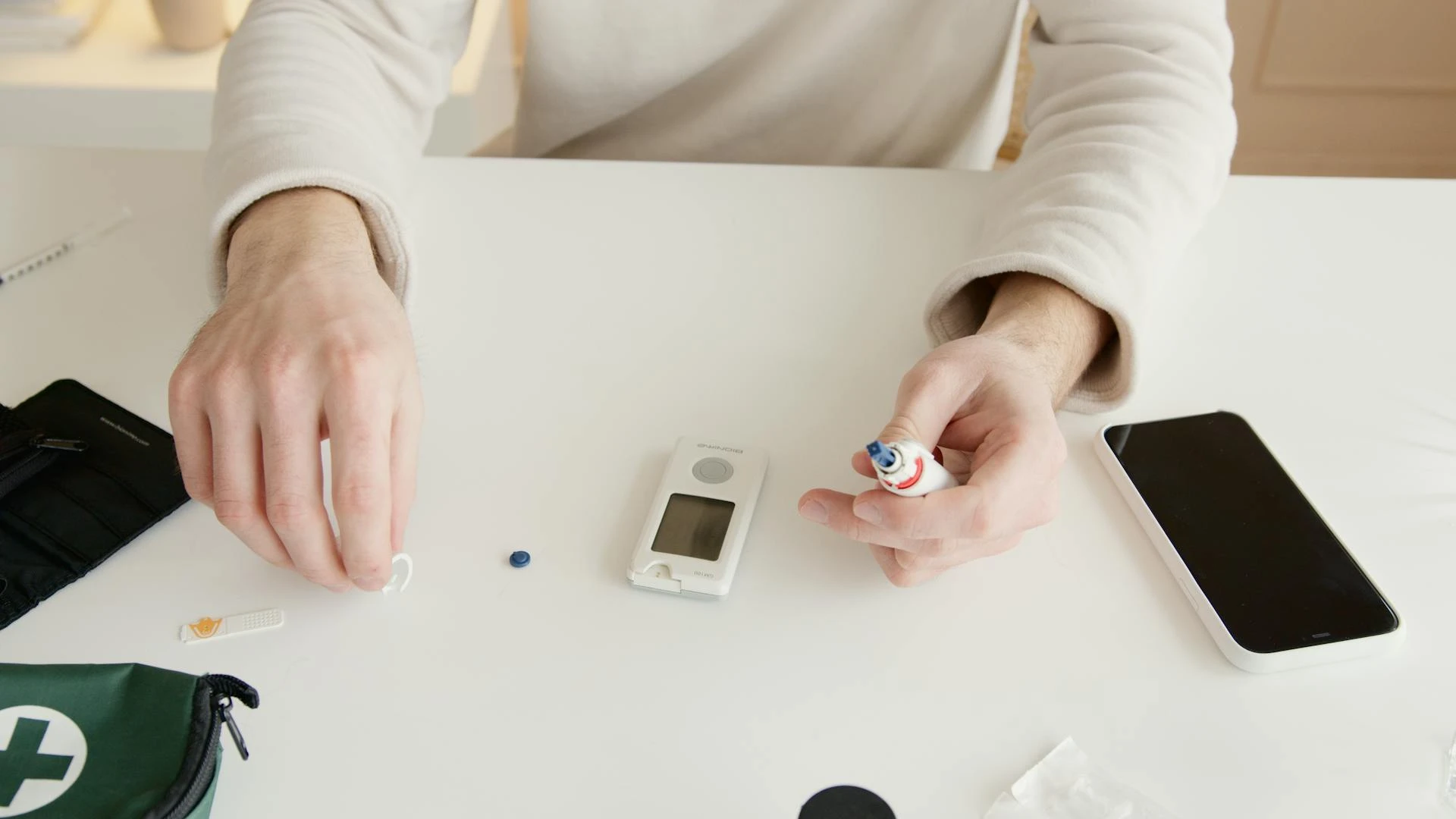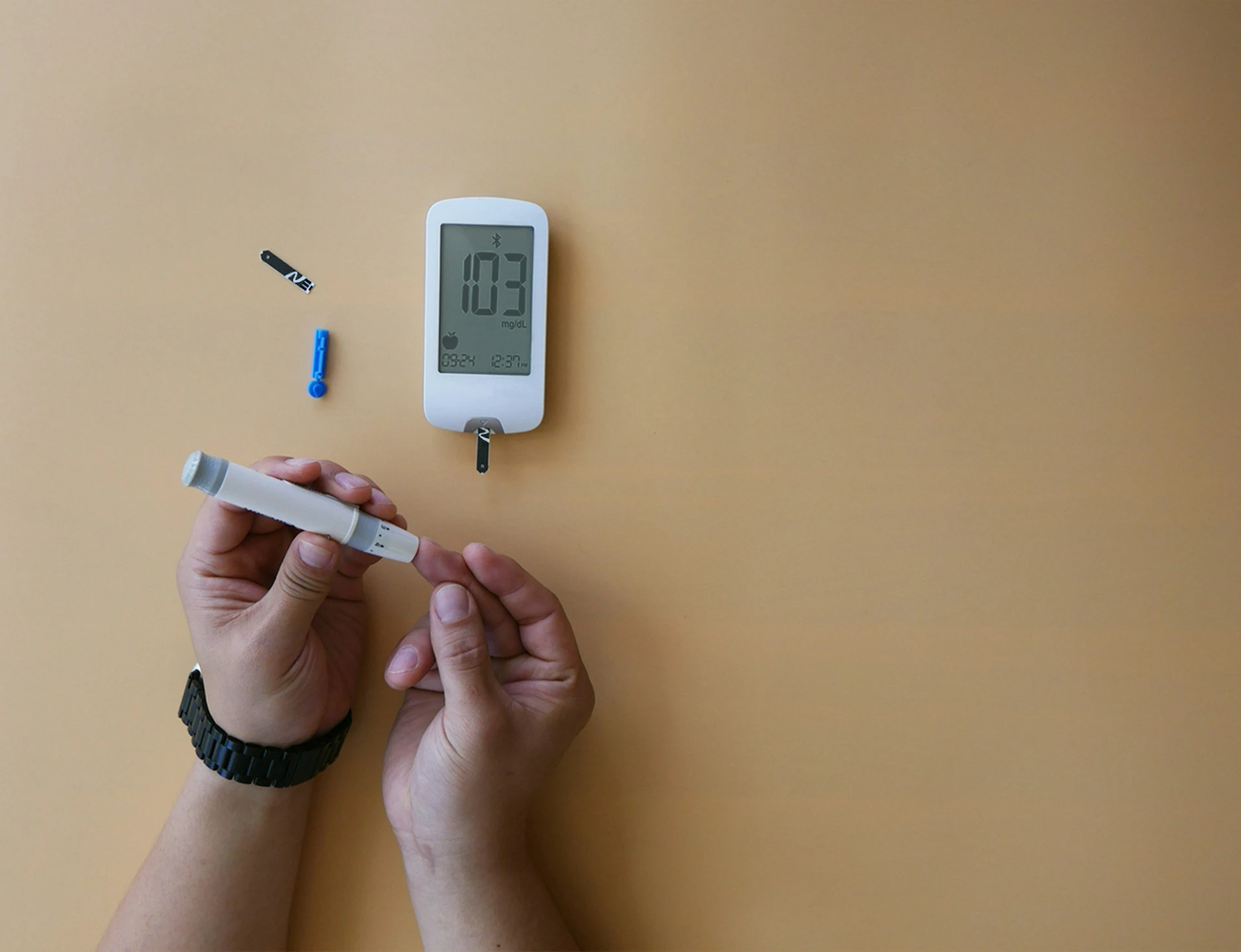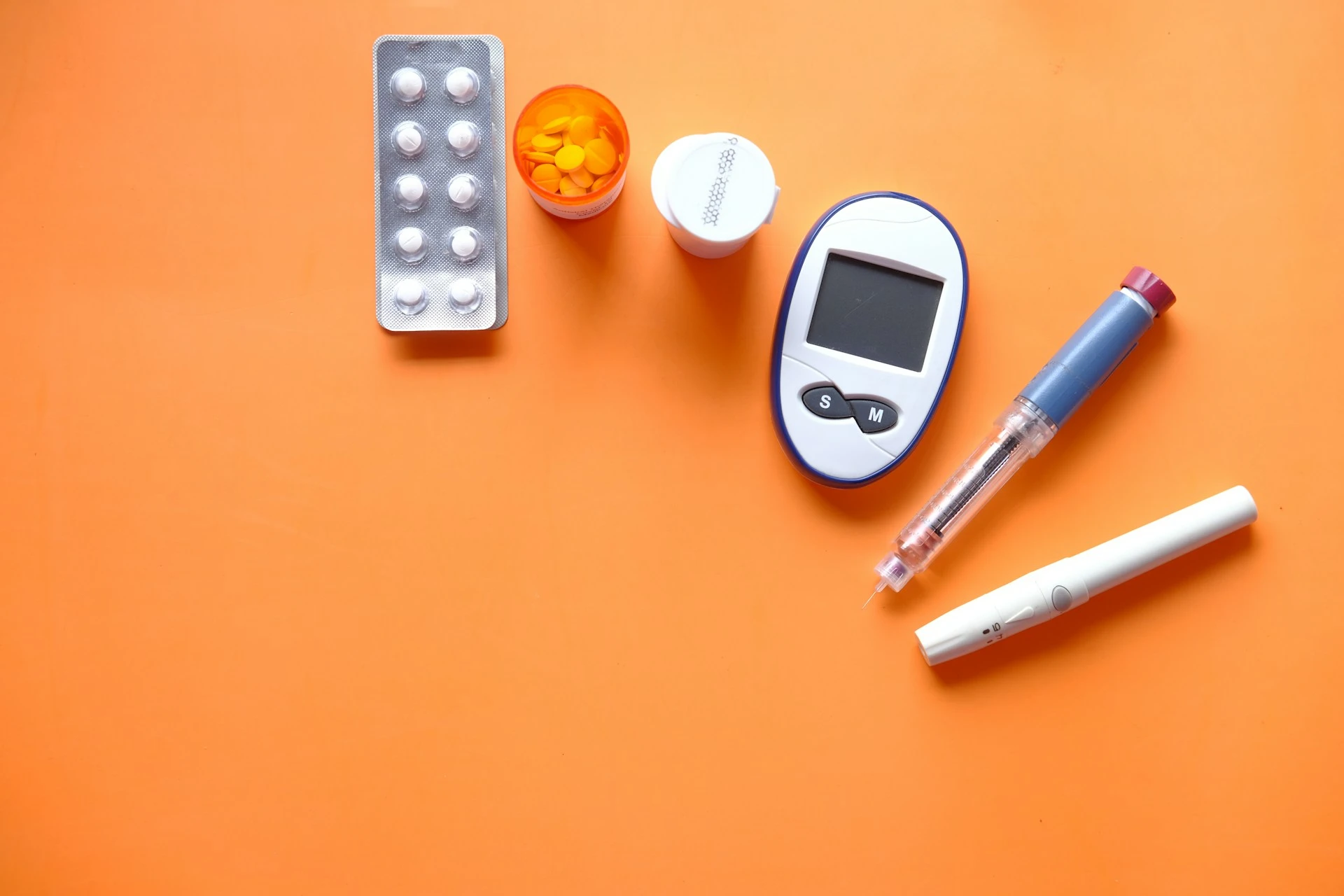Table of Contents
If you or someone you care about is managing diabetes or prediabetes, you’ve likely heard of the A1C test. This simple blood test is one of the most important tools for understanding long-term blood sugar control—but it’s also one of the most misunderstood.
What exactly is A1C? How is it different from daily blood glucose checks? And what steps can you take to improve it naturally?
Whether you’ve recently had an A1C test or want to prevent diabetes complications, this article will help you understand what the number means and how to use it as a guide toward better health.
What Is A1C?
A1C (also called HbA1c) is a blood test that measures the average level of glucose in your blood over the past 2 to 3 months. It reflects how much sugar has attached to your hemoglobin, the protein in red blood cells that carries oxygen.
The higher your blood sugar levels have been, the more glucose sticks to hemoglobin—and the higher your A1C number will be.
Unlike a fasting glucose test or a fingerstick reading, which show blood sugar at a single moment, the A1C gives a big-picture view of how your body has been managing glucose over time.
What Do A1C Numbers Mean?
Here’s how A1C results are typically classified:
| A1C Level | What It Means |
|---|---|
| Below 5.7% | Normal |
| 5.7% – 6.4% | Prediabetes |
| 6.5% or higher | Diabetes |
| 7.0% or higher | Poorly controlled diabetes (in most cases) |
For most adults with diabetes, the goal is to keep A1C below 7%, though this may vary based on age, health status, and risk factors.
Your healthcare provider will help you set a personalized target based on your individual needs.
How A1C Relates to Average Blood Sugar
You can estimate your average blood glucose level based on your A1C using this general formula:
Estimated Average Glucose (mg/dL) = (A1C × 28.7) – 46.7
Here are some approximate conversions:
| A1C | Avg. Glucose (mg/dL) |
|---|---|
| 5.7% | 117 |
| 6.0% | 126 |
| 7.0% | 154 |
| 8.0% | 183 |
| 9.0% | 212 |
So if your A1C is 8%, your blood sugar has likely been averaging around 180 mg/dL for the past few months.
How Often Should A1C Be Checked?
- If your blood sugar is well controlled: every 6 months
- If your treatment plan is changing or your A1C is not at goal: every 3 months
The A1C test requires a simple blood draw and does not need to be done fasting.
It’s important to note that certain conditions—like anemia, pregnancy, or kidney disease—can affect A1C accuracy. In those cases, alternative monitoring may be recommended.
What Causes a High A1C?
Several lifestyle and health factors can lead to elevated A1C levels:
- Eating high-sugar, low-fiber foods
- Inconsistent meal timing
- Lack of physical activity
- Chronic stress or poor sleep
- Skipping medications or insulin
- Infections or illness
- Hormonal imbalances (like thyroid issues or PCOS)
Even modest changes in routine can influence your A1C over time—for better or worse.
How to Lower A1C Naturally
If your A1C is elevated, the good news is that small, consistent habits can bring it down—often without drastic changes.
1. Focus on Fiber-Rich Foods
Fiber slows digestion, stabilizes blood sugar, and reduces A1C over time.
Add more:
- Leafy greens, broccoli, zucchini
- Beans, lentils, and chickpeas
- Chia seeds and flaxseeds
- Berries, apples (with skin), and pears
- Whole grains like quinoa and oats
Aim for 25–30g of fiber per day, ideally from whole foods.
2. Move Your Body Daily
Exercise helps your cells absorb glucose more efficiently, even without weight loss.
Try:
- Brisk walking (15–30 minutes)
- Light strength training
- Cycling, dancing, or swimming
- Short walks after meals
Movement after eating is especially helpful for lowering post-meal glucose spikes.
3. Balance Your Meals
Use the plate method:
- Half non-starchy vegetables
- One quarter lean protein
- One quarter whole grains or starchy veggies
- Add healthy fat like olive oil or avocado
Avoid eating large portions of carbs without fiber, fat, or protein to slow them down.
4. Sleep and Stress Matter More Than You Think
Poor sleep and chronic stress raise cortisol, which can increase blood sugar—even if your food is “on track.”
- Aim for 7–9 hours of quality sleep
- Establish a calming bedtime routine
- Use deep breathing, meditation, or light stretching to manage stress
- Take breaks during the day to reset
Lowering stress levels supports better insulin sensitivity.
5. Stay Consistent With Medications
If you’re on medication or insulin, take it exactly as prescribed. Missed doses or inconsistent timing can lead to blood sugar fluctuations that affect your A1C.
Work with your doctor or pharmacist if side effects are making it hard to stay consistent.
6. Avoid Sugary Drinks
Beverages like soda, fruit juice, sweet tea, and flavored coffee drinks cause immediate glucose spikes and add hidden carbs to your day.
Choose instead:
- Water or sparkling water
- Herbal teas
- Black coffee or with unsweetened almond milk
- Homemade smoothies with greens and low-sugar fruits
Even small changes—like cutting out one sweetened drink per day—can make a difference in your A1C over time.
How Long Does It Take to Lower A1C?
Because A1C reflects 2–3 months of blood sugar data, you’ll usually see changes within that timeframe. Most people notice a drop in A1C after 8–12 weeks of consistent lifestyle improvements.
If your A1C is very high, your doctor may recommend medications or insulin temporarily to bring levels down safely.
Keep Tracking and Adjusting
Lowering A1C isn’t about being perfect—it’s about being proactive. Use tools like:
- A glucose meter or CGM
- Food journal or diabetes app
- Activity log or pedometer
- Sleep tracker
- Stress reduction plan
These help you notice patterns, identify triggers, and stay in control of your progress.
Scientific References
- American Diabetes Association. (2022). Understanding A1C and Its Role in Diabetes Management
- Mayo Clinic. (2023). A1C Test: What It Is and What the Numbers Mean
- Centers for Disease Control and Prevention. (2022). Lower Your A1C Naturally: Tips That Work









